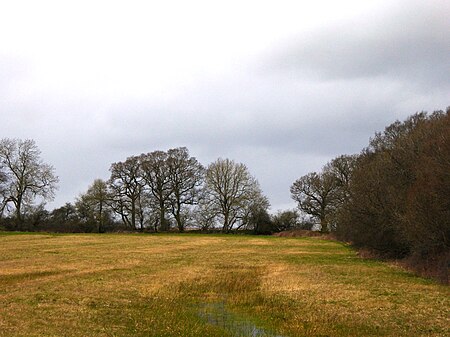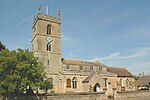Woodsides Meadow
Berkshire, Buckinghamshire and Oxfordshire Wildlife Trust

Woodsides Meadow is a 4-hectare (9.9-acre) nature reserve south of Wendlebury in Oxfordshire. It is managed by the Berkshire, Buckinghamshire and Oxfordshire Wildlife Trust. It is part of Wendlebury Meads and Mansmoor Closes, which is a Site of Special Scientific Interest.This meadow still has medieval ridge and furrow marks, showing that it has not been farmed by modern methods. More than 100 species of wild flower have been recorded, such as pepper-saxifrage, sneezewort, green-winged orchid, cuckooflower and ragged-robin. Skylarks and brown hares are often seen on the site.
Excerpt from the Wikipedia article Woodsides Meadow (License: CC BY-SA 3.0, Authors, Images).Woodsides Meadow
Mansmoor Road, Cherwell District Charlton-on-Otmoor
Geographical coordinates (GPS) Address Website External links Nearby Places Show on map
Geographical coordinates (GPS)
| Latitude | Longitude |
|---|---|
| N 51.855 ° | E -1.194 ° |
Address
Woodsides Meadow
Mansmoor Road
OX5 2US Cherwell District, Charlton-on-Otmoor
England, United Kingdom
Open on Google Maps







